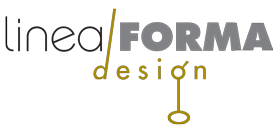I am proud to present the first guest post from my dear friend from down-under, Ron Skaff, original partner and co-founder of Linea Forma in 1980. Bill Giobbi
 As I have been separated from graphic and industrial design for a number of years, my design skills are now focused on developing and re-designing organisations to deliver sustainable practice, value creation, collaboration and partnership for delivering futuristic needs for customers/stakeholders that survive the “Internet of Things” through wicked design thinking and authentic leadership that forces development and delivery of creative process that is both relevant and innovative.
As I have been separated from graphic and industrial design for a number of years, my design skills are now focused on developing and re-designing organisations to deliver sustainable practice, value creation, collaboration and partnership for delivering futuristic needs for customers/stakeholders that survive the “Internet of Things” through wicked design thinking and authentic leadership that forces development and delivery of creative process that is both relevant and innovative.
There are many big questions ( I believe) to be considered (by Designers) for the Designers. What future drives design and therefore what personal development is required by designers to invest in themselves ongoing to innovate? What I see from a commercial organisation standpoint, designers are becoming slaves to digital disruption after the fact, and are responding by delegating deep specialists (with low skills) the creative process without understanding the greater impact to the market or the community. Hence over time Design/Designers will experience skill and capability fade and lose value in the development and creation process. What to do about this? Investing in soft skills: authentic leadership, deliberate practice, reflective practice to change the landscape lenses.
My philosophy as a practitioner of organisational change, is to provide an interdependent collaboration that sensitises my colleagues to the reality of their professional environment and exposes them to the concerns of people in that professional environment. In accordance with the proverb attributed to Confucius, my androgyny follows this premise: “I hear and I forget. I see and I understand. I do and I remember.”
The Way of Seeing. I have used the term/concept of androgyny, with the different cultural and commercial ways paradigms can be recognized, and with a number of approaches through which design capability and personal growth and innovation can be perceived. Commercially, my comments are taking into account the growing significance and lack of insights to visualise and produce sustainable learning to meet community needs. However, “ways of seeing” don’t relate to visuality alone. It is also a metaphor in regards to different understandings of institutions that formulate the creative rules and business practices for best practice (black and white; male or female; disruptive or internet of things, etc.). These are androgyny and the varying perceptions of androgyny across global cultures as we know today, to work globally with our ideas, collaborations, and partners.
My mentoring over the last 10 years focuses on preparing colleagues and mentees to apply their critical thinking and reasoning skills to solve problems they will encounter in personal development and in professional practise. As such, personal goal setting that sensitises the mentees to the built in collaborative creative environment and enables them to experience it first-hand allows the value creation that can be shared without fear in a virtual creative environment as a personal learning laboratory or what Marcel Proust describes as “having new eyes.”
As a mentor, I have found four stages that one must pass through to gain professional ongoing proficiency:
1) understanding the language and describing ontological processes involved
2) internalisation of the relevant concepts
3) integration of the ontological processes, language and concepts into solutions
4) the ongoing interaction and collaboration with professional colleagues.
Recognising these stages has helped define the androgyny around which I have structured my mentoring efforts.
Share this:

